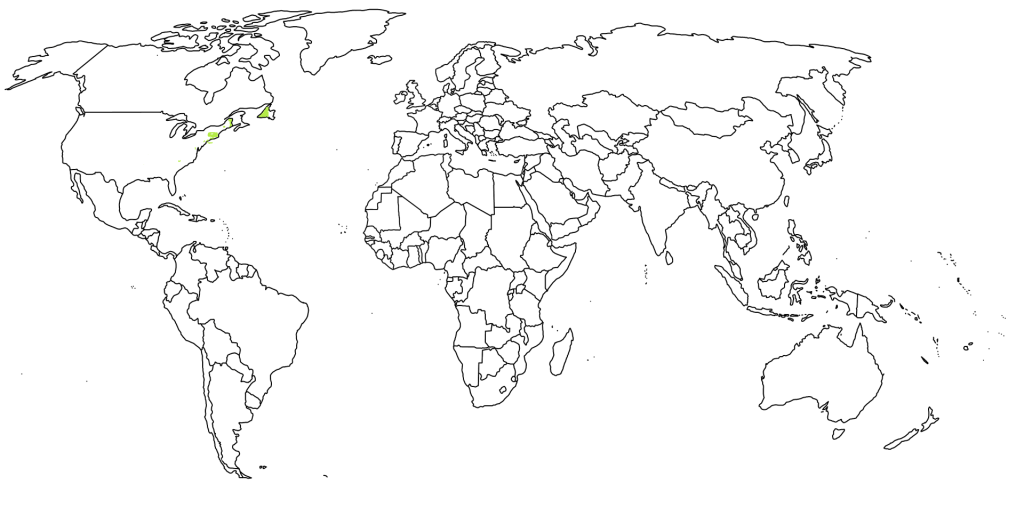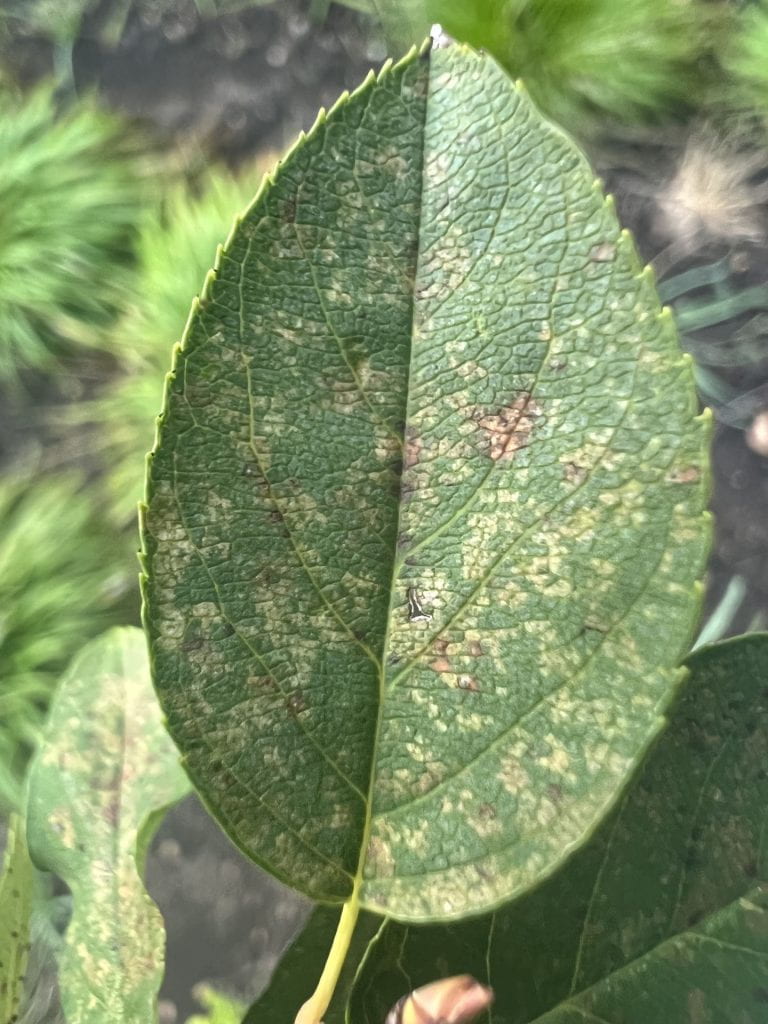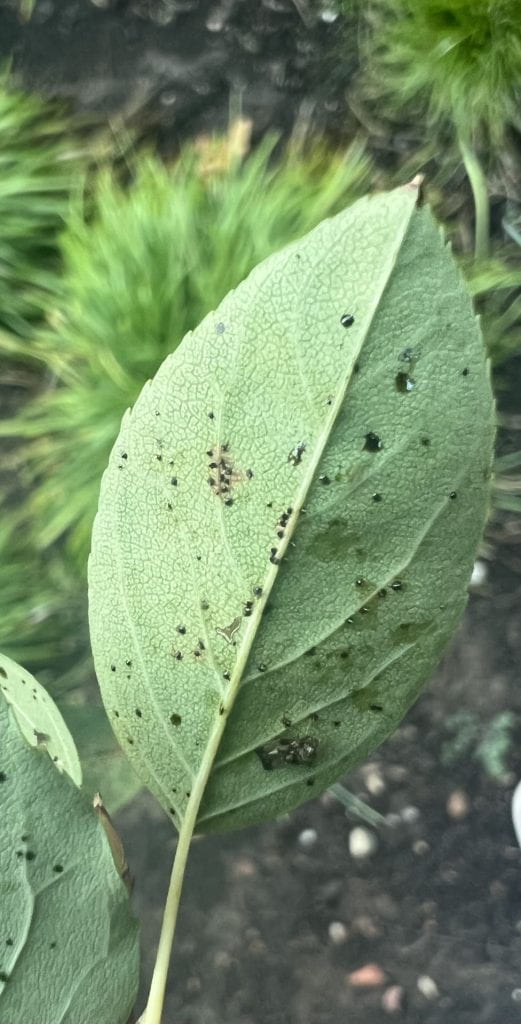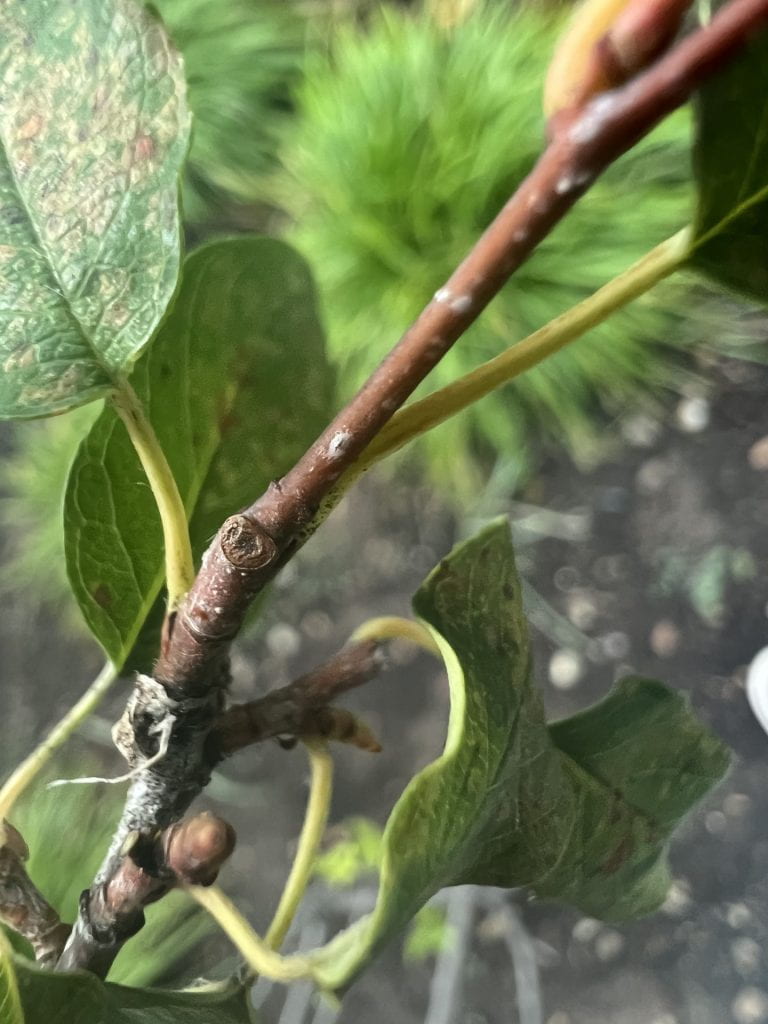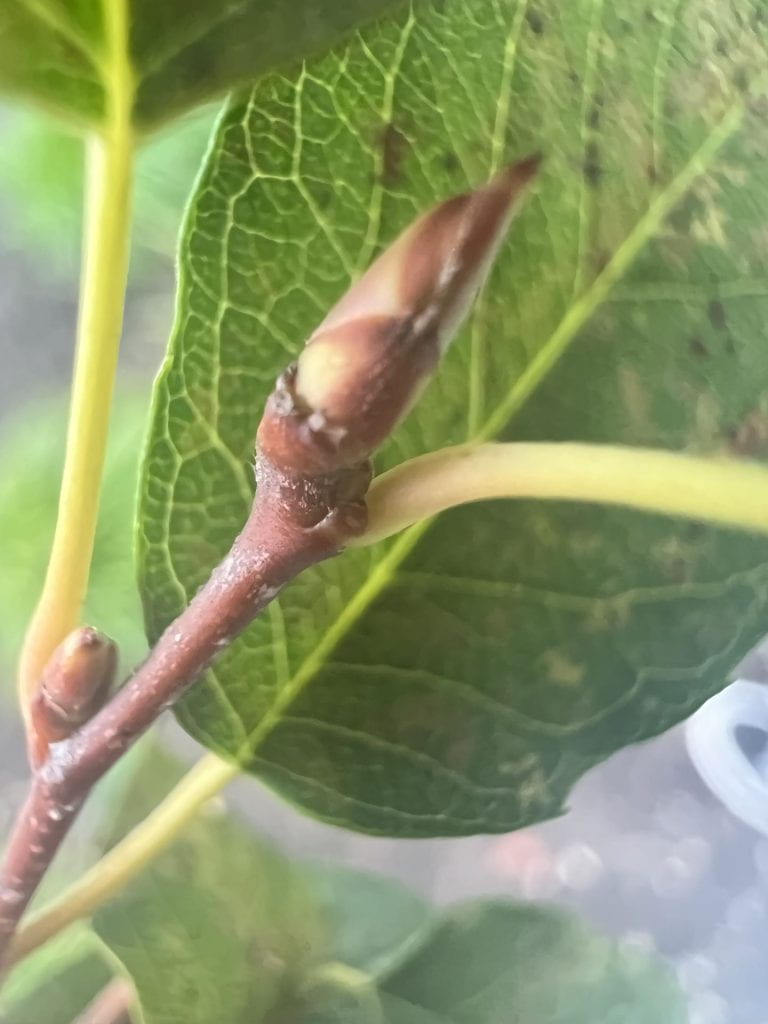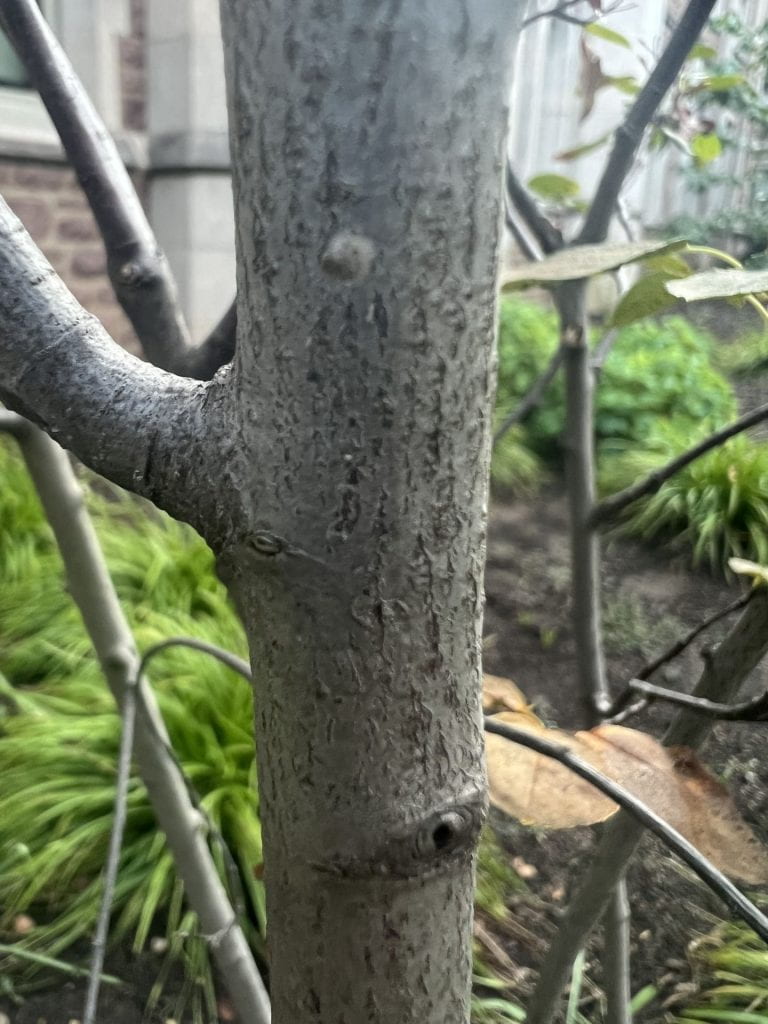Nantucket Serviceberry
Arbor Walk #131, TreeKeeper ID #7096
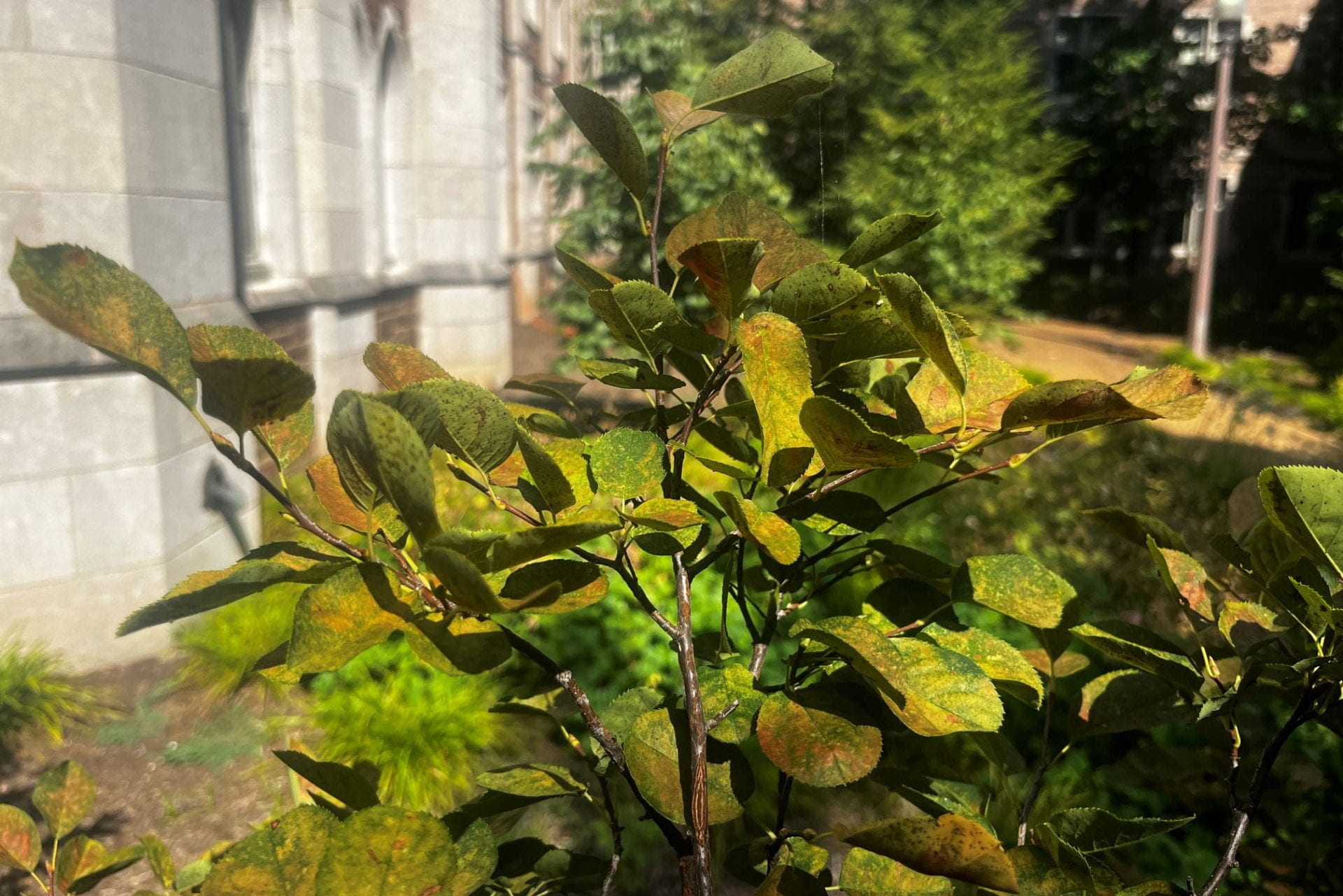
This shrub is quite rare, endemic to Maine, Massachusetts, and other isolated pockets along the East Coast from Nova Scotia to South Carolina. Its edible berries and pollen-tipped white flowers are notable characteristics of this plant, which inhabits sandy areas mainly along the coastline. However, it can also live inland, in sunny, well drained soils. The fruits of most Amelanchier plants are very popular with wildlife.
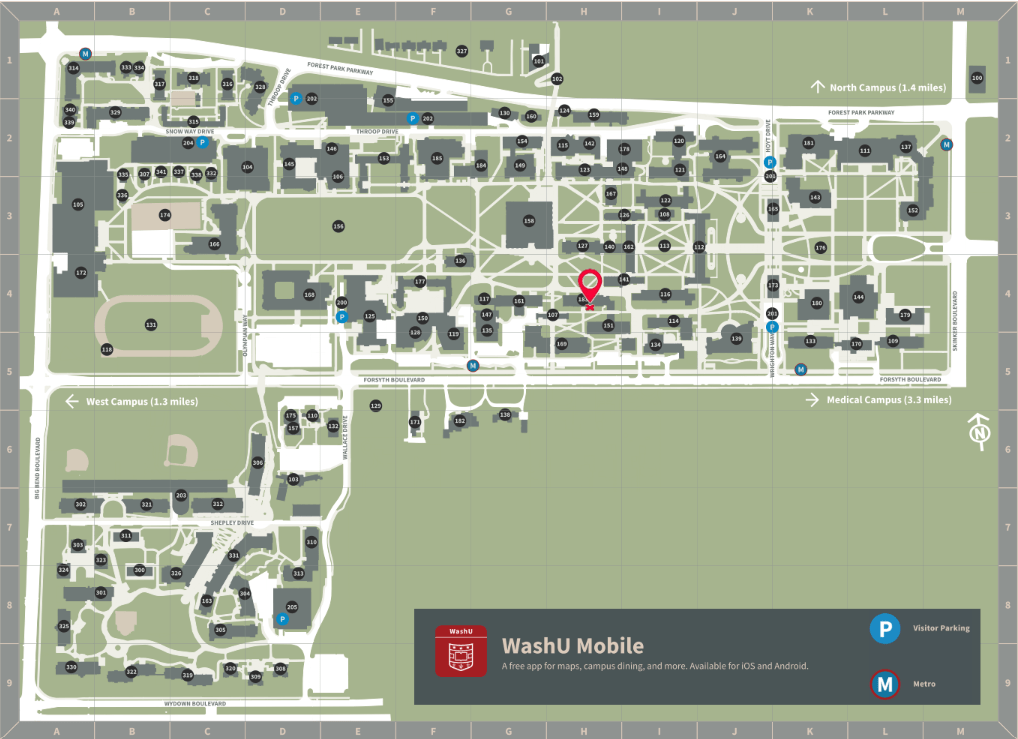
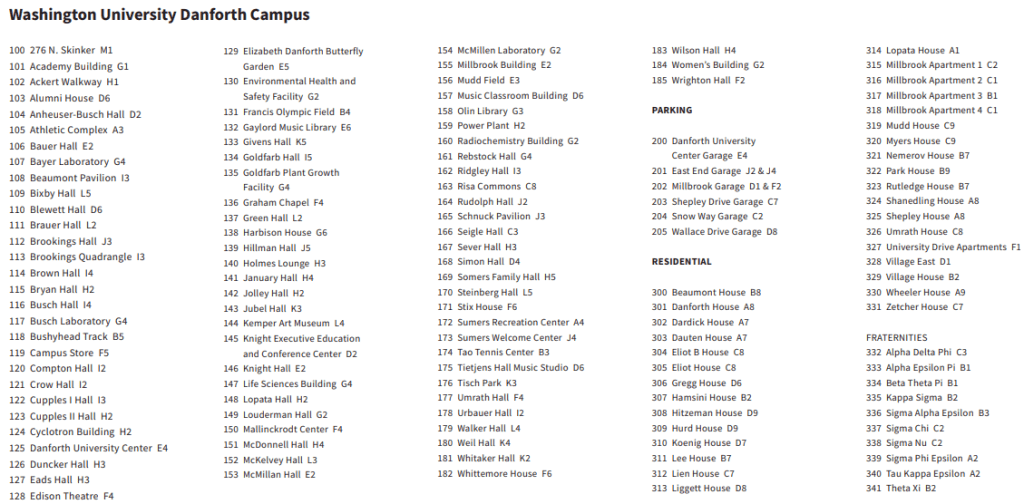
GPS Coordinates
N/A
Percent Concrete
N/A
Distance to Buildings
| Year | Close Building #1 | Close Building #2 | Close Building #3 |
|---|---|---|---|
Distance to Other Species
| Year | Close Species #1 | Close Species # 2 | Close Species # 3 |
|---|---|---|---|
Standard Measurements
| Year | Height (m) | DBH (cm) | Crown Diameter N-S (m) | Crown Diameter E-W (m) | Average Crown Diameter (m) |
|---|---|---|---|---|---|
| 2023 | 1.71 | 0.583 | 1.11 | 0.99 | 1.05 |
| 2024 | 1.77 | TBD | 1.25 | 1.22 | 1.235 |
Nests and Pests
| Year | Description |
|---|---|
| 2023 | N/A |
Leaf Identification
The leaves of the Nantucket Serviceberry are small and ovate-shaped. The margins are serrated, and the venation is pinnate and reticulate. They have silvery hairs on the underside when they first emerge but become glabrous (smooth) with time.
Twig and Bud Identification
The twigs of the Nantucket Serviceberry are gray to reddish-brown. The buds have many scales and are also reddish-brown. The buds may have slight pubescence.
Bark Identification
The Nantucket Serviceberry’s bark is typically smooth and can have faint dark stripes.
Fruit Identification
The fruit of the Nantucket Serviceberry is an edible, berry-like, dark purple pome. The diameter is usually around 1/4″ to 1/3″. The fruits ripen in early summer.
Flower Identification
The Nantucket Serviceberry’s flowers are white and have 5 petals. They appear in clusters with about 7 to 10 flowers per cluster. They are narrow and spoon-shaped. This tree has a specialized ability called andropetaly, which means that they sometimes bear pollen on the ends of their petals. The flowers bloom in early spring.

